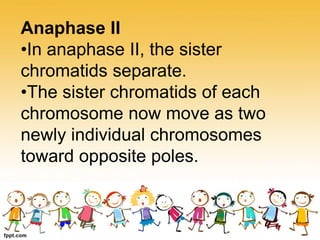The document outlines the processes of cell reproduction, focusing on mitosis and meiosis, highlighting their key phases and differences. Mitosis is described as somatic cell division leading to two genetically identical daughter cells, while meiosis involves two divisions resulting in four haploid cells with genetic variation due to crossing over. Additionally, the document delves into the cell cycle, interphase stages, and specific terminologies related to chromosomes and cell division.

















































































